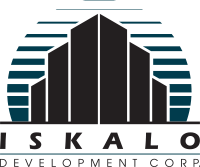More and more medical businesses today are shifting towards digitally-based practices. It’s important that their office space accommodates the medical office technology necessary for operating efficiently and successfully. Refer to our medical office building checklist to understand what essential technology your office will need to integrate!
Medical Office Technology Must-Haves
Reliable WiFi Solution
Among the most important medical office building essentials is a fast, secure and reliable WiFi connection. Doctors and medical staff need to be able to access and transfer patient records stored online while making sure that their confidential information is kept private and secure.
Practice Management Software
A robust practice management software system will help you maintain a successful practice by streamlining your clinical, financial, and administrative operations to maximize time, money, and efficiency. Practice management software will automate many daily time-consuming tasks while integrating all of your business activities in one place. These software systems enable staff to create new patient reports and profiles, schedule appointments and send text reminders, verify insurance and eligibility, track patient financial responsibilities, and generate administrative reports easily.
Electronic Health Records (EHRs)
Most medical practices have transitioned from paper-based medical records to electronic health records (EHRs). Electronic records make it easier to keep track of patients and make changes to their information digitally, saving your staff hours of paperwork management. Your EHR solution can also be integrated with your practice management software so you can communicate follow-up appointments, medication reminders, and test results to patients via text or email.
Patient Portals
Patient portals are becoming increasingly popular in modern practices. They offer patients convenient, 24-hour access to their personal health information, such as recent doctor visits, test results, and medications, through a secure online website. Patient portals also allow patients to easily schedule appointments, request prescription refills, make payments, check benefits and coverage, and more anywhere and anytime, limiting the time your staff has to spend on the phone. Physicians can also better monitor their patients and collaborate with other providers.
Card Scanners
Investing in a high-quality card scanner is a great way to save time and money on photocopying ID and medical insurance cards. With a card scanner, you can scan a patient’s insurance card, driver’s license, or other ID card right into a digital medical record.
Exam Room Computing
Installing computers or keeping a laptop or tablet in the exam room allows physicians immediate access to their patients’ medical records during treatment. Exam room computing makes collecting patient data and taking notes much more efficient, freeing up time for follow-up treatment discussion. It also helps doctors communicate with patients through digital charts and other visual illustrations.

